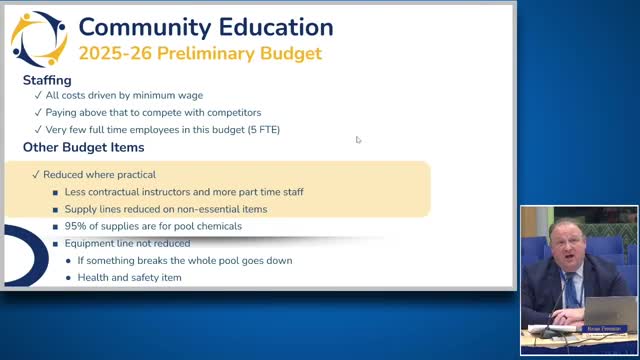Webster School District outlines budget challenges amid rising employee costs
March 05, 2025 | WEBSTER CENTRAL SCHOOL DISTRICT, School Districts, New York
Thanks to Scribe from Workplace AI , all articles about New York are free for you to enjoy throughout 2025!

This article was created by AI using a video recording of the meeting. It summarizes the key points discussed, but for full details and context, please refer to the video of the full meeting. Link to Full Meeting
Officials noted that the budget includes only five full-time employees, relying heavily on part-time staff to manage operations. This shift has led to reductions in contractual instructors and non-essential supply lines, with a focus on prioritizing health and safety items, such as pool maintenance. The center recently hosted a successful event, showcasing its importance to the community and the need to retain qualified lifeguards.
Salary increases of 8.5% were discussed as necessary to remain competitive, but the budget also reflects a reduction in certain areas, including a $10,000 cut in contractual services. The rising costs of employee benefits, particularly healthcare and pensions, were a major concern. The Teacher Retirement System (TRS) bill is projected to exceed $8.5 million, influenced by salary increases and the complexities of part-time employee contributions.
Looking ahead, officials anticipate further challenges due to expected double-digit increases in healthcare costs, driven by changes from the Inflation Reduction Act. This uncertainty complicates budgeting for the upcoming fiscal years, prompting discussions about tightening expenses and preparing for potentially larger budget gaps.
As the meeting concluded, the emphasis remained on strategic planning to navigate these financial hurdles while ensuring the community's needs are met. The next steps involve further discussions to refine budget projections and explore cost-saving measures.
Converted from 2025-26 Budget Workshop #1 meeting on March 05, 2025
Link to Full Meeting
Comments
View full meeting
This article is based on a recent meeting—watch the full video and explore the complete transcript for deeper insights into the discussion.
View full meeting
